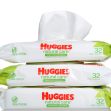The label says that germ-X “kills 99% of germs*. But does the asterisk that appears not only on the front label of the hand sanitizer but on the back label as well, adequately inform reasonable consumers that, in fact, the product is “effective at eliminating 99% of many common germs and bacteria? That was the issue on the fourth amended complaint filed by the plaintiff in a class action suit against Vi-Jon LLC, the manufacturer of germ-X, Purell, and Dial hand sanitizers. The Ninth Circuit has ruled that the district court erred when it dismissed the plaintiff’s case and reversed its ruling.
In a 2-1 memorandum opinion, Ninth Circuit Judges Morgan Christen and Senior Circuit Judge William Fletcher reversed the decision of Presiding U.S. District Court Judge Jeffrey T. Miller of the Southern District of California on September 11. Circuit Judge Lawrence Van Dyke dissented.
Miller’s dismissal of plaintiff Anthony Moreno’s complaint for “unfair and unlawful business acts and practices” was based on the grounds that it did not meet the qualifying criteria of California’s Unfair Competition Law (UCL), which prohibits “unlawful, unfair or fraudulent” conduct in business activities. Moreno also sued Vi-Jon for deceptive advertising practices as defined by California’s False Advertising Law (FAL), which makes it a criminal offense to make false or misleading statements in advertisements.
The plaintiff’s third complaint, which Miller made “on behalf of those similarly situated,” alleged violations of the California Consumer Legal Remedies Act (CLRA) that protects consumers from false advertising, fraud, and other business practices and permits class action suits to recover damages and prevent unlawful practices.
The Ninth Circuit opinion began with an explanation of California’s “reasonable consumer standard,” which defines how each of Miller’s complaints would be reviewed. This standard is based on the precedent set by Ebner v. Fresh, Inc.,838 F.3d 958, 965 (9th Cir. 2016) and Lavie v. Procter & Gamble Co., 129 Cal. Rptr. 2d 486, 495 (Ct. App. 2003). It explains, “…the reasonable consumer standard requires a probability ‘that a significant portion of the general consuming public or of targeted consumers, acting reasonably in the circumstances, could be misled.’”
Moreno’s case, asking for damages and economic relief, traveled a long path to the Ninth Circuit. It began in 2020 and went on appeal to the Ninth Circuit previously in 2022. The current reversal has given new life to plaintiff’s fourth amended complaint because in it he offered “a narrow alternative theory of deceptiveness,” that, unlike his previous theories, relied on the reasonable consumer standard.
In earlier attempts, Moreno argued that Vi-Jon’s labels are deceptive because of their claims on the front label that the product “kills 99% of germs.” The Ninth Circuit agreed that the front labels on their own would be deceptive, but plaintiff’s allegation of deception fails because of asterisks on both front and back labels that, when read together, clarify that germ-X is “Eliminating more than 99.99% of many harmful germs and bacteria in as little as 15 seconds.” Thus, the Ninth Circuit determined that taken together “the back labels narrow the product’s claims to “many common harmful germs,” so “reasonable consumers would not be deceived into believing that the products kill 99.99% of all germ species commonly found on hands.”
But Moreno’s fourth amended complaint provided a new approach. This time, he argued that Vi-Jon “does not test its Products on human hands” and that “under actual consumer use conditions instead of in a sterile laboratory environment, the Products are additionally ineffective, including where the hands of consumers are dirty, greasy, sweaty or wet.” He further explained that hand sanitizers “work by essentially breaking down the outer barrier of certain microbes in order to kill germs” and that “dirt, moisture or grime…act as a protective barrier and prevent the active ingredient…from (reaching) the outer wall of microbes in order to kill them.”
The Ninth Circuit was persuaded by this argument and added that germ-X’s back label qualifier does not defeat plaintiff’s new theory. The opinion said that at this early stage of the pleadings, the judges could not conclude “that reasonable consumers who have “very little scientific background…would understand that hand sanitizer is less effective after a person engages in everyday activities.”
The opinion continued by explaining that “…at a minimum, this is not one of the ‘rare’ cases in which dismissal is appropriate,” and it concluded that Moreno’s fourth amended complaint is viable only with respect to Moreno’s alternative theory. For this reason, the Ninth Circuit also reversed the district court’s order dismissing Moreno’s express warranty and quasi-contract claims that alleged unjust enrichment under the UCL, FAL, and CLRA because the label language constituted “a promise” and the plaintiff and others similarly situated “purchased the products on reliance of the labels. Therefore, the warranty was breached because 99% of “germs under real-world conditions” were not killed.
In dissent, Judge VanDyke was not persuaded by any of the majority’s reasoning. Instead, he said that he could not agree with the majority’s decision to “breathe further life into Moreno’s now-many-times-rejected complaint based on a supposed ‘narrow alternative theory’ premised on Moreno’s passing and conclusory allegations that Vi-Jon’s sanitizers are ‘additionally ineffective’ on ‘dirty, greasy, sweaty, or wet’ hands.” He continued, writing “…the majority is forcing a tiny tail to wag a dead dog, and I would not force the district court to consider a phantom theory of relief pieced together from a few stray remarks in a lengthy complaint that it has in any event already rejected when granting a prior motion to dismiss.”






